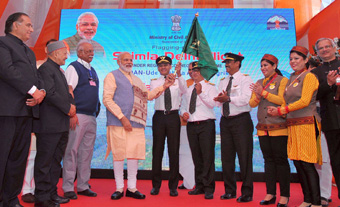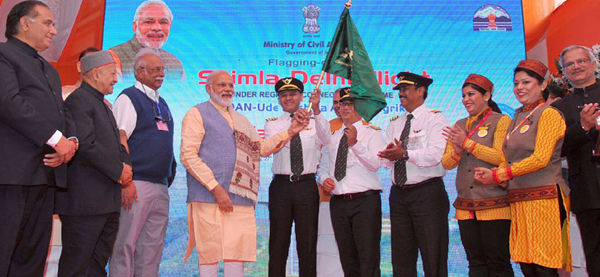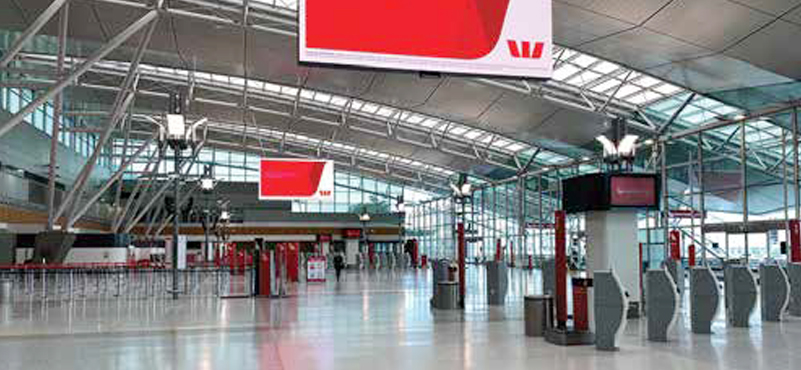The central government’s ambitious UDAN scheme was launched from Jubbar Hatti airport near Shimla in Himachal Pradesh last month. The PM, who was accompanied by Chief Minister Virbhadra Singh and Union Ministers P. Ashok Gajapathi Raju, Jayant Sinha and J.P. Nadda, simultaneously flagged off inaugural UDAN flights on the Kadapa-Hyderabad and Nanded- Hyderabad sectors through video conferencing. The scheme is aimed at increasing regional connectivity and enabling people from small towns to fly at cheap fares. In a series of tweets, the PMO said that the airfare for a one-hour, 500 km journey has been capped at an all-inclusive rate of Rs. 2,500. The pricing may vary for longer routes and durations and a single person is eligible to buy 9 to 40 seats in a flight. Countries like USA, Canada and Australia also have similar schemes in place.
 According to Union Minister Jayant Sinha, the scheme is lined up to create an additional 100 airports within the next 2-3 years. Airlines under the UDAN scheme will have a seating capacity ranging from 19 to 78 seats and a fare cap of Rs. 2,500 per seat for 50 per cent of the seats in each flight. Airline Allied Services, SpiceJet, Turbo Megha Airways and Air Odisha are the airlines which have been chosen to ply passengers under this scheme. “The lives of the middle class are being transformed and their aspirations are increasing. Given the right chance, they can do wonders. Why should air services be only for the elite in this country? I told my officials that I want people wearing hawai chappals to be taking flights. Today, you can fly at rates that are cheaper than taxi, which may cost you Rs 8 to Rs 10 per kilometre. Under these flights, you can fly for as low as Rs 6 to Rs 7/ kilometre and reach Delhi from Shimla in an hour,” Prime Minister Narendra Modi said at his public address in Shimla on Thursday. The PM also went on to add that out of the 75 airports that could be made operational under this scheme, 30 would be made operational within the year. The scheme, which was developed through extensive and multiple consultations with stakeholders, is said to operate at various levels to ensure profitability. Firstly, by reducing operating costs significantly.
According to Union Minister Jayant Sinha, the scheme is lined up to create an additional 100 airports within the next 2-3 years. Airlines under the UDAN scheme will have a seating capacity ranging from 19 to 78 seats and a fare cap of Rs. 2,500 per seat for 50 per cent of the seats in each flight. Airline Allied Services, SpiceJet, Turbo Megha Airways and Air Odisha are the airlines which have been chosen to ply passengers under this scheme. “The lives of the middle class are being transformed and their aspirations are increasing. Given the right chance, they can do wonders. Why should air services be only for the elite in this country? I told my officials that I want people wearing hawai chappals to be taking flights. Today, you can fly at rates that are cheaper than taxi, which may cost you Rs 8 to Rs 10 per kilometre. Under these flights, you can fly for as low as Rs 6 to Rs 7/ kilometre and reach Delhi from Shimla in an hour,” Prime Minister Narendra Modi said at his public address in Shimla on Thursday. The PM also went on to add that out of the 75 airports that could be made operational under this scheme, 30 would be made operational within the year. The scheme, which was developed through extensive and multiple consultations with stakeholders, is said to operate at various levels to ensure profitability. Firstly, by reducing operating costs significantly.
Secondly, by providing a market-discovered subsidy for half the seats and finally, by guaranteeing a three-year exclusivity on routes. The routes that are to be connected have been chosen by the airlines themselves keeping in mind the market potential between various destinations. The scheme also has market friendly features like reduction in air turbine fuel taxes and removal of navigation and airport charges. UDAN is also said to have aroused significant interest in private operators who are eager to find a way to tap into new markets. Whether the newcomer airlines under the UDAN scheme are able to survive, despite the host of concessions and subsidies at landing airports, remains to be seen.




































